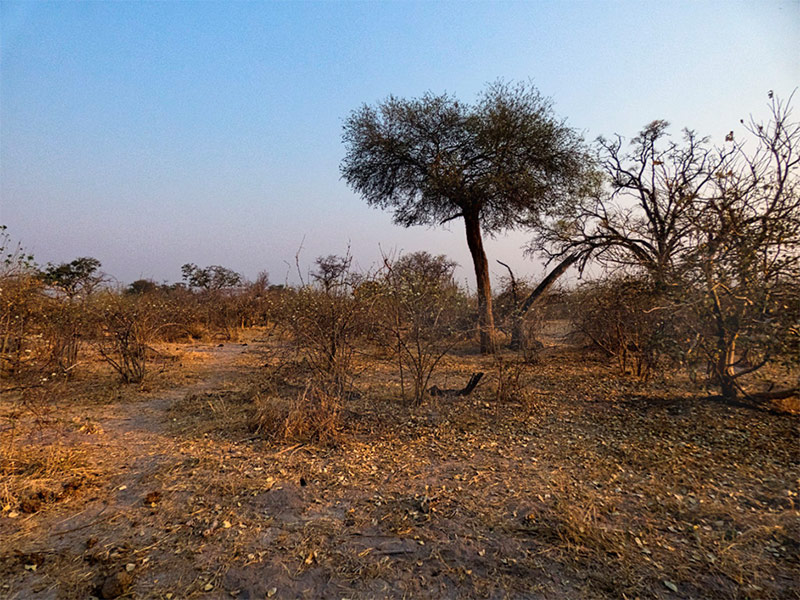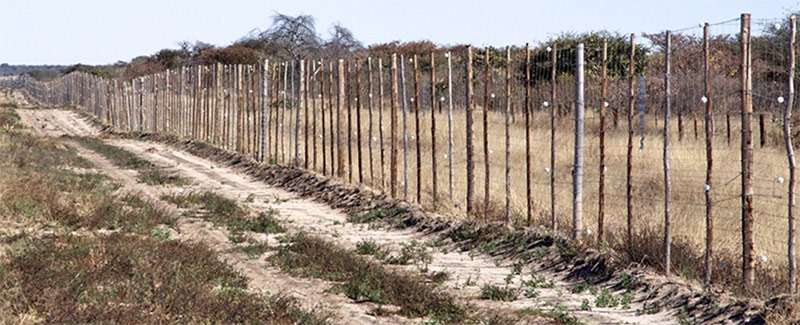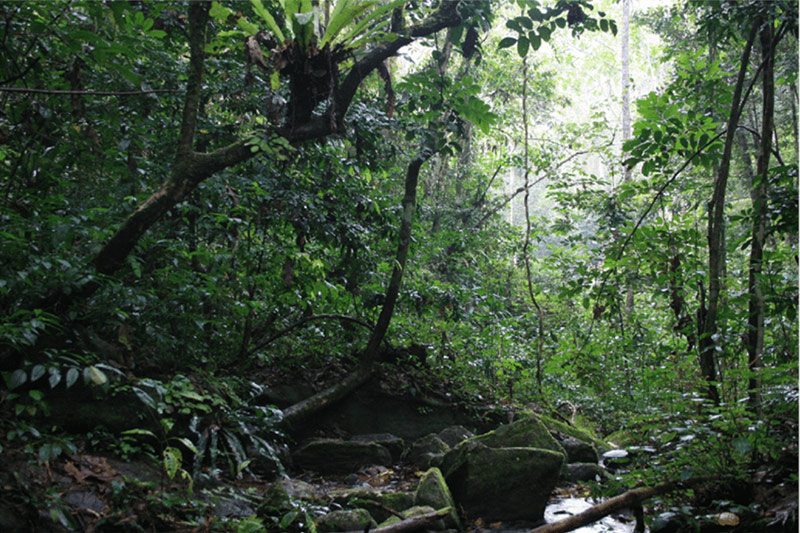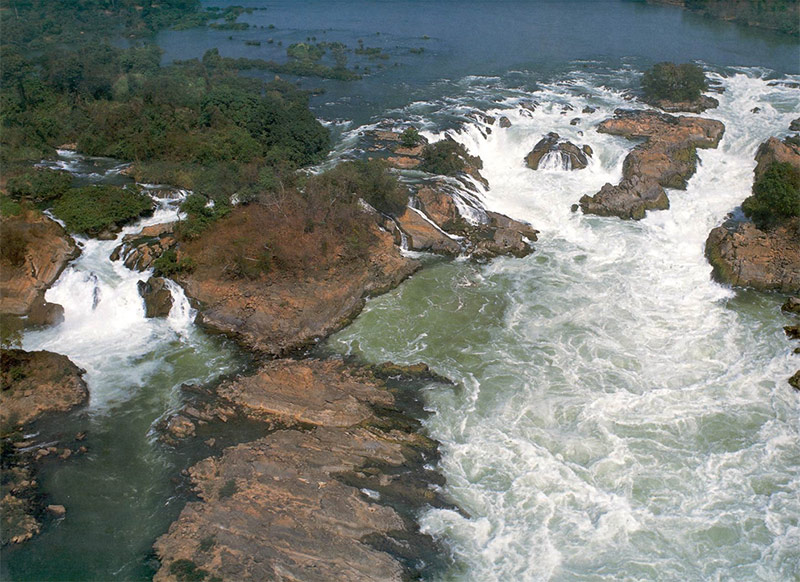My respect for nature and natural resources is based on my upbringing. My parents were often out and about; we had a garden where I could play and I have early memories of wildlife watching, forest walks and general love for nature.
During my teens, I was an avid collector of fossils, and I kept a collection of hundreds of specimens. Time has come to part with these memories, and I recently donated boxes of Miocene bones, Cretaceous sea urchins and belemnites, carboniferous imprints of ferns and much more to the local Natural History Museum in Malta. I kept a few precious fossils, that have a particular emotional value.
Through my interest in fossils, I became intrigued by landscapes, which is one of the reasons that I studied Physical Geography. I love the bigger perspective of nature and biodiversity, and I am very good at making the connections between different parts of the landscape. It also led to my interest as a speleologist, and I started with cave exploration in the Ardennes, Belgium in the early seventies. Later on, it became my passion and I studied karst hydro-chemistry when I moved to Bristol in the UK in 1977. This is described in another section of my website.
My first long-term job was in Botswana, and I was seconded by the Dutch Government to the Botswana Ministry of Local Government and Lands, as a district-based land use planner. The officer title was District Officer (Lands), and I was considered a member of the local government team. The first assignment in 1982 was in a sub-district of the largest district in Botswana – Central District. The posting was in the village Tutume, and my work entailed making maps of land developments, provide advice on natural resources management, and temporarily I was in charge of the so-called drought relief projects, as 1983 was very dry.

After a few years, I was asked to move to the District Headquarters in Serowe, where I became the senior District Officer (Lands), with responsibilities for the whole of Central District. This included mentoring local planners, and advising the District Land Management Authority. One of the main issues regarding land use planning in Botswana in those days was the allocation of boreholes for cattle watering. While communal land was all owned by the State, boreholes were managed under private lease, and in a semi-desert country with a lot of cattle, boreholes are worth a lot of money. There were strict rules about 8 kilometres spacing between watering points, but without detailed maps, there were regular disagreements about distances and locations of the boreholes. Another key issue was the planning and positioning of cattle disease control fences, in relation with wildlife migration routes.

There are also ranches in Botswana that are freehold land, and after having left Botswana in 1987, I was asked to return as District Officer (Lands) in Chobe District where a large agricultural development project on the Pandamatenge Farms was being developed. During 1988, my wife and I lived in Kasane, on the Chobe River and my main role was to help with negotiations between the Government of Botswana and the potential contractors. In the evenings and during the weekend we would go into Chobe National Park, which was, and still is, a paradise of nature.
The experience of District Officer (Lands) gave me the ammunition to apply for the role of land use planner in the Serengeti National Park in Tanzania. The position was advertised by the IUCN Regional Office in Nairobi, but when I came for the interview, I saw a second advert for a regional positon as project coordinator, dealing with nature conservation in Ethiopia, Kenya, Tanzania and Uganda. This was what I really wanted to do, so I asked to be interviewed for this position. And –as they say – the rest is history.
My job with the IUCN East Africa Regional Officer involved the back-stopping of some of the most interesting nature conservation projects in the Region. This included community forest conservation projects in the Usambaras Mountains of northern Tanzania and on Mount Elgon in Uganda, and the Uganda National Wetlands Programme. I also worked very closely with the environmental management authorities in all four countries, and this made me a good candidate for the vacancy of Advisor the National Environment Agency (NEA) in Vietnam.

After 11 years in Africa, my wife and I moved to Southeast Asia and settled in Hanoi in 1994. NEA was a new institution, and I helped to draft legislations and regulations. I arranged training in a variety of topics for a lot of staff, both in Hanoi and in the Provinces, and we organized a few overseas trips to Canada, Sweden and Switzerland. After a few years, the Government of Vietnam invited IUCN to establish a National Office and I was appointed as the first IUCN Country Representative in 1997. My overwhelming task was to find a local replacement, and hand over my responsibilities. After extensive consultation and head-hunting, Mr Nguyen Minh Thong was encouraged to leave the Ministry of Foreign Affairs and take over from me as Country Representative.
When I left Hanoi in 1999, I was awarded the Medal for Science and Technology “In recognition of the assistance that Hans Friederich has provided during his days as adviser to the Director-General of the National Environment Agency from 1994 to 1996 and for his successful management of the IUCN Programme in Vietnam.”
The IUCN Regional Director for Asia proposed me as the coordinator for a UNDP/GEF project in the Mekong, dealing with wetland management. I was appointed in early 2000, and managed the preparation and submission of a USD 18 million UNDP/GEF programme proposal from Bangkok in Thailand. The programme had a central coordination role, with field activities along the Xe Kong River in southern Lao, the Song Kram River basin in Thailand, a stretch of the Mekong River near Steung Treng in northern Cambodia and the Tram Chim wetland in the Vietnamese Mekong Delta. The project was approved, and the first tranche of funds were committed by the Netherlands, UNDP and GEF, with additional funds from 4 of the national Governments of the Mekong River Commission (Cambodia, Lao PDR, Thailand and Vietnam). A few years later, I handed the implementation of the project over to a colleague, and focused on other water and wetlands issues in the region as the IUCN Water and Nature Initiative representative in Asia.

IUCN Director-General Achim Steiner approached me during the World Parks Congress in Durban in 2003 and invited me to come to Headquarters as the new Head of Donor Relations. This was later re-branded as the Strategic Partnership Unit. One of the key achievements during this time was the funding for the “Mangroves for the Future” programme with the help of former President Bill Clinton. “Mangroves for the Future” was a response to the devastating tsunami in late 2004, and we managed to raise some 15 million USD after a fundraising meeting with President Clinton in New York. Another key activity was the fundraising for the new IUCN Headquarters, which was developed as the first Platinum-level Green Building in Switzerland. We raised the money partially through a private sector fundraising effort, which was a first for IUCN.
In 2009, the then Regional Director for Europe resigned and the IUCN Director-General, Julia Marton Lefevre asked if I was willing to take on this responsibility. For five years, I was the Pan-European Regional Director, overseeing offices in Brussels, Belgrade and Tbilisi, and working with the large membership of IUCN in Europe. One of the key aspects was the work with the European Commission in Brussels, the European Parliament and the various lobbying groups that operate in Brussels. As a result of financial considerations and staffing re-organisation, the position of Pan-European Regional Director was abolished in 2013, and I left IUCN.
I applied for the position of Director-General of the International Bamboo and Rattan Organisation – INBAR, and started my new job in Beijing in January 2014. My bamboo experiences are described elsewhere.
Current involvement
I am currently involved in two main initiatives – the planting of bamboo as an alternative crop in southern Europe and the assessment of the impact of tourism on climate change. This is described in other parts of the website
But, I am also still working on other nature-related issues, especially the promotion of the concept of Nature-based Solutions for development challenges. Bamboo can be considered one of these solutions, and mangrove conservation is another obvious example. I am also very interested in the urban aspects and the role of integrated water resources management.
One of the critical issues that is being debated in view of climate change and GHG reduction is the planting of trees and other vegetation. I am indirectly supporting various reforestation initiatives, and may get involved more actively in the years to come.
